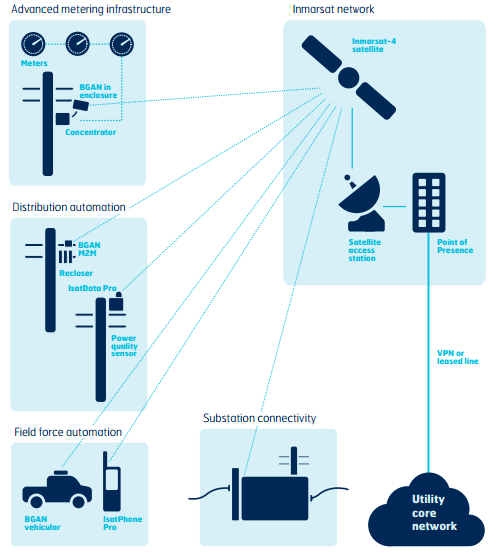The quest for a national smart grid to reduce energy costs has led to the exploration of satellite SCADA as the technology of choice. Satellite SCADA (Supervisory Control and Data
Acquisition) solutions have an upper hand over other networking technologies because of its availability, path diversity, support system and ubiquity. The technology is an innovative form of IP based communication. Smart grid requirements dictate that their applications need a strong network with a remote communication infrastructure. In addition, an IP based satellite platform can provide real time data exchange, broadband reach and operational visibility.
Flexible Solutions for Smart Grid Communications
M2M Satellite SCADA technology offers flexible solutions for smart grid communications through facilitating control over energy costs and consumption. One of the key areas of the smart grid is the integration of two way communication making it an interactive and dynamic infrastructure. The operational efficiency and network reach across the utility territory is increased through:
– Advanced metering infrastructure (AMI) – smart grids require smart meters to assist consumers to regulate and manage their energy consumption and provide utilities with visibility of demand. The meters are connected to an assembly point through a local interlocked wireless network. These assembly points collect information on usage within geographical area and send the data to the utility centers backup through a cellular link.
– Distribution automation- Electricity utilities can use BGAN (Broadband Global Area Network) or BGAN M2M services along power distribution channels as primary or secondary links to the data center. A single IP data connection, also two way, provides automated monitoring and control of switches and devices. This enables the utilities to maintain constant surveillance of their distribution network. The surveillance reveals voltage fluctuations, service demands and outages. The build of the BGAN and BGAN M2M terminals makes them ideal for pole mounting in most locations.
– Substation connectivity- this is ideal for hard to reach areas where fixed line communications may be too expensive to install. Immarsat provides satellite SCADA for the electricity substations either as a standalone solution or together with VSAT. BGAN is flexible enough to serve both low volume and high frequency and can therefore be used as a backup for communications at any substation.

There are common operational requirements that all utilities have to support service crews while on the field. Communication is one of these operational requirements. Satellite SCADA helps in two ways to offer reliable communication for daily operations:
– Workforce mobility- constant communication between engineers and maintenance crews with the headquarters is essential for seamless workflow. Whereas cellular networks are capable of providing this, they are rendered useless in remote areas and in exchange of large data volumes due to limited bandwidth. Using the BGAN network, it is easy to use the satellite SCADA facilities both for bandwidth and voice enabling seamless communication on the field and the headquarters.
– Disaster recovery- continuity in business is vital for utilities that provide essential services in this case electricity. Therefore, responses during natural and artificial disasters that affect the working of terrestrial networks are vital to the continuity. The alternative communication path provided by satellite SCADA helps maintain the channels of communications. For example, Immarsat offers a secure fully equipped communication network that protects the resources and data on the smart grid. The network can also be used to direct operations or restore them completely independent of cellular technology.
The ubiquitous nature of satellite SCADA is the perfect option for utilities that are looking for a bridge between their smart grids and terrestrial network coverage hence achieving a significant improvement in smart grid applications and their communication needs across their entire service jurisdiction.

